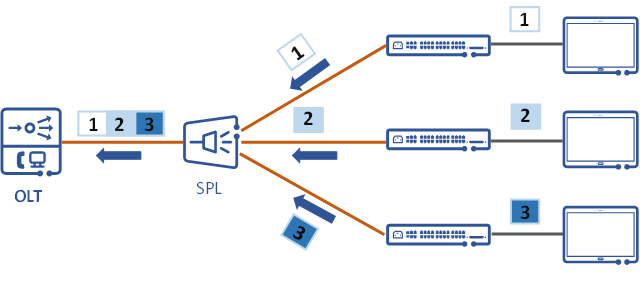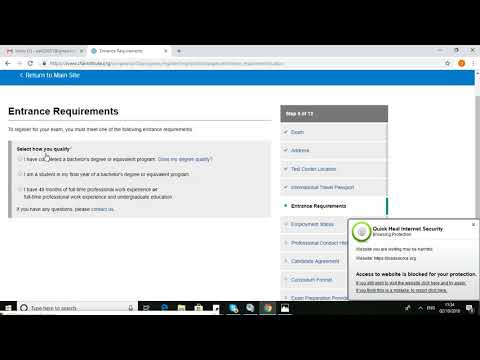Content

The correct way to architect and write a program is top-down. Bottom-up design is fundamentally
busted and you shouldn’t use it. Every system I’ve been involved in
that used top-down succeeded and those that used bottom-up failed. Edsger Dijkstra wrote an
entire monologue
about this.

Otherwise, top-down approach will calculate sub-problem solutions in the usual manner. We say it is the memoized version of a recursive solution, i.e., it remembers what results have been computed previously. In Bottom-Up programming you think of the basic functionality and the parts you’re going to need and build them up.
Which Approach Is Best?
That is
what will make your code last, is organizing it around that. That’s the
stuff that’s going to stick around, the data. We do those kinds of things all the time, but
this is the kind of thing that you’re looking for in data that is not
so clear. Someone’s name is actually not a great example because it’s
well-known that people have names.
In contrast, in the bottom-up approach, the smaller problems are solved and then they are integrated to find the solution of a bigger problem. Top-Down Model is followed by structural programming languages like C, Fortran etc. In ecology, top-down control refers to when a top predator controls the structure or population dynamics of the ecosystem. The interactions between these top predators and their prey is what influences lower trophic levels. Changes in the top level of trophic levels have an inverse effect on the lower trophic levels. Top-down control can have negative effects on the surrounding ecosystem if there is a drastic change in the number of predators.
- You develop the actors and their methods, and then you tie them together to make a coherent whole.
- Every day, new apps, products, and tools are being introduced into the market.
- By contrast, the Bauhaus focused on bottom-up design.
- In addition to modules, the top-down programming uses sequences and the nested levels of commands.
- In this method, each module is developed on its own from the source, and only thereafter is it possible to construct the whole algorithmic design by integrating the modules into one another.
Bottom-up programming is just the opposite of top-down programming. Here, the program modules are more general and reusable than top-down programming. Top-Down Model is a system design approach where the design starts from the system as a whole. The complete system is then divided into smaller sub-applications with more details.
Machine Learning
This testing gives a high deployment coverage in the early stages of software development. Overall, the bottom-up approach can be a powerful tool for building complex, scalable software systems in C++. By breaking down a large project into smaller, more manageable components, developers can work more efficiently and effectively, and can create more reliable and robust software in the process. However, implementing this approach requires careful planning, attention to detail, and a solid understanding of both C++ programming and software engineering principles. It requires a significant amount of communication among different modules.
TopDown approach is also termed as breaking a bigger problem into smaller problems and solving them individually in recursive manner. Undergraduate students are taught the basis of Top-down bottom-up processing around their third year in the program. Going through 4 main parts of the processing when viewing it from a learning perspective. The two main definitions; Being bottom-up processing that is determined directly by environmental stimuli rather than the individual’s knowledge and expectations (Koch, 2022). Top-down being stimulus processing that is determined by expectations, memory, and knowledge rather than directly by the stimulus (Koch, 2022).
The Bottom-Up Approach
For example, a physics engine allows us to perform realistic simulations in an application. Using a library can be regarded as a form of bottom-up design. However, unlike the top-down approach, we don’t get to see the full picture at first. When we write out low-level modules, we don’t have our higher-level ones in mind. This may lead to poor connections between the higher- and lower-level modules.

The idea that
someone’s name got entered wrong, you have to correct it, that
correction operation, that’s also been true for a long time. It’s hard to imagine a world
where we enter in data correctly the first time. What we do though is we start in the middle, which is neither top-down
nor bottom-up. We exist in this land where nothing is really designed. We try to couple things together that we don’t really know if they go
together yet, but they feel like they do for this one feature.
Information Hiding
This approach can lead you to quickly solve the issue at hand. On the other hand, you may unknowingly implement components that have already been implemented, or not understand the impact of your changes on other parts of the what is bottom up approach in programming codebase. This approach uses the tabulation technique to implement the dynamic programming solution. It addresses the same problems as before, but without recursion. The recursion is replaced with iteration in this approach.
- And optimization problems are the must-haves for these programming interviews since they feature complex and large solution spaces.
- Dynamic programming is an algorithmic paradigm that divides broader problems into smaller subproblems and stores the result for later use, eliminating the need for any re-computation.
- The Bottom-Up Approach is a kind of integration testing in which the modules at lower levels are tested first with modules at higher levels, and then the modules at higher levels themselves are tested.
It is also more difficult to monitor and manage the project. Therefore, the bottom-up approach is better suited for smaller problems. The key to stepwise refinement is that each module should end up doing only one task. Bottom-level modules can be completed using only a few lines of code. Omkar holds a bachelor’s degree in computer science with a machine learning minor.
Rails is tremendously complex [but] in a few sessions you can teach a person to create an interactive website backed by a database. It’s frustrating to teach because you’re walking a tight rope. But that feeling of instantly being productive is what draws people in, what makes them think, “hey, maybe I can do this”.
Nevertheless, he needed to learn that we have another area that makes sure that what we save in the database is in a certain format so that we don’t send information from our clients (that we do not save by design). In this approach, first we develop the main module and then the next level modules are developed. This procedure is continued until all the modules are developed. Learn more about dynamic programming and other core software development topics in our Caltech Coding Bootcamp.
That’s an unfortunate side-effect of top-down programming, but I’m
not generally bullish on unit tests anyway; most of them don’t provide any
value. (See Mostly avoid unit tests.) For those tests that would provide value, write them
anyway, despite the fact that the component is working for the application
as it is now. For the individual programmer, modern tools also encourage bottom-up
programming. In IDEs like Eclipse, for example, writing code is easier
if the types and methods you’re calling are already defined. But if you
defined those first, then you’re doing bottom-up programming!
For example, ActionScript, the programming language for Flash applications, contains a sophisticated standard library for representing visual elements on a computer screen. When we design top-down, each of our individual modules were designed to work for the above module only. When we design bottom-up, each of our individual modules serves a purpose on its own. Therefore, the smaller modules can be used more than one larger module, facilitating code reuse. Moreover, general-purpose modules are easier to read and understand than specific ones, so the bottom-up approach also enhances code readability. It’s not impossible to cruise through a programming task on a new codebase and actually complete it without understanding its logic, purpose, or context.
The decision structures are used for conditional execution of statements (for example, ‘if statement). The sequence structures are used for the sequentially executed statements. The loop structures are used for performing some repetitive tasks in the program. It is generally used with object oriented programming paradigm such as C++, Java, Python, etc.
If we follow this approach, we will get time complexity O(n). Therefore, while using this methodology, each and every module is constructed and tested on an individual level (referred to as unit testing) before being integrated together to create a functional solution. In order to carry out the unit testing, particular low-level functions are often leveraged. These approaches utilize the concepts of molecular self-assembly and/or molecular recognition.

The difference is that, in
the agile…I’m not saying agile in the good way. I’m saying agile in
the way it’s practiced in a lot of places. Down at the bottom, you say, “Well, that’s it.” A person has a name
and a person can correct their record of their name.
It is an alternative approach to the top-down approach. If you look closely at this recursion call stack, you will see that some subproblems have been repeated a few times. The animation given below represents the recurrence of subproblems by using circular shapes. In bottom-up approach first designing, beginning from the base level to the abstract level is done. In top-down approach the system is first formulated specifying but not detailing any subsystem at the beginning, and then each system and its subsystem is defined in great detail until specifying it to the base. Connect and share knowledge within a single location that is structured and easy to search.

